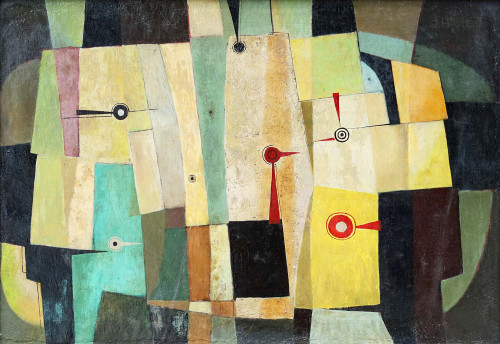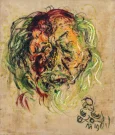
Previously, we briefly reviewed Cubism painting; in this article, let's delve deeper into what the Cubism style is. You may have heard of several Indonesian artists who adopted this style, such as Mochtar Apin, Roedyat Martadiredja, and Handrio. However, where did these Cubism paintings come from? Let's trace the history first.
History of Cubism
The history of Cubism began in 1907 when Pablo Picasso created his famous work, "Les Demoiselles d'Avignon," which became an early prototype of the Cubism style. Georges Braque was interested in this work and invited Picasso to collaborate and explore this new style. The collaboration between these two great painters in 1909, produced a new painting style in art history.
Art critic Louis Vauxcelles gave the name "Cubism" when he saw some of Georges Braque's paintings that, according to his description, looked "cubist." The term he coined became known to the public, and Cubism began to receive greater attention. Like other styles of modern art, Cubism differed from Realism and Naturalism in that paintings were not required to resemble real painted objects.
Characteristics of Cubism Painting
Cubism painting is a very distinctive and innovative art style in the history of art. The main characteristics of Cubism painting are:
Various Separate Fragments
Cubism paintings often depict objects or subjects by breaking them into fragments or separate parts. In contrast, to complete realistic depictions, Cubism reduces objects to separate elements.
Multiple Perspectives in One Image
Cubism often shows subjects from multiple points of view and perspectives in a single image. This creates a multidimensional and often confusing impression because the object is observed not only from one point of view but from many different angles.
Geometric Shapes
Cubism paintings often emphasize geometric shapes, such as cubes, triangles, cylinders, and other geometric forms. The objects and subjects depicted can be separated into these basic shapes, creating more abstract compositions.
Flat Objects
According to Hotelier, Cubism often expresses objects flatly, without attempting to create the traditional illusion of depth or perspective. This is different from conventional fine art, which seeks to create depth and volume in images. The advantage of this technique is its emphasis on each shape, creating a flat image without interference from other shapes.
The combination of these characteristics created a very unique and revolutionary aesthetic in painting, making Cubism a very influential art movement of the 20th century.
Names of Cubism Figures
- Pablo Picasso
- Georges Braque
- Juan Gris
- Ries Mulder
- Mochtar Apin
- Roedyat Martadiredja
- Handrio
- Ahmad Sadali
Cubism painting is a movement established at the beginning of the 20th century by artists such as Pablo Picasso and Georges Braque, presenting a visual experience full of complexity and abstraction. With features such as separate fragments, multiple perspectives in one image, geometric shapes, and a flat appearance, Cubism paintings created works of art that shook conventional expectations.
As an art movement that created a major transformation in the world of fine art, Cubism not only revolutionized the way we see and understand objects around us but also brought the courage to explore formal boundaries in painting. By breaking objects into separate fragments, presenting multiple perspectives, and emphasizing geometric shapes, Cubism not only created visually interesting works of art but also contributed to later developments in abstract art.
Global Auction, as a trusted art auction house in Indonesia, has succeeded in collecting several valuable collections of Cubism paintings, showcasing the uniqueness and complexity of each painting. If you are interested in viewing or collecting valuable works from the Cubism style, please contact our marketing team and visit our social media for further information.
Source:
Subroto, L.H., & Ningsih, W.L. (2022, March 22). Aliran seni kubisme: Sejarah, tokoh, ciri-ciri, dan jenis. Retrieved from https://www.kompas.com/stori/read/2022/03/24/170000579/aliran-seni-kubisme-sejarah-tokoh-ciri-ciri-dan-jenis
Thabroni, G. (2022, January 18). Kubisme-Pengertian, ciri, tokoh, contoh karya & analisis. Retrieved from https://serupa.id/kubisme-pengertian-ciri-tokoh-contoh-karya-analisis/
Yulita, L. (2023, October 02). Aliran kubisme: Pengertian, sejarah, ciri, tokoh, contoh & analisisnya. Retrieved from https://hotelier.id/studi/aliran-kubisme/










